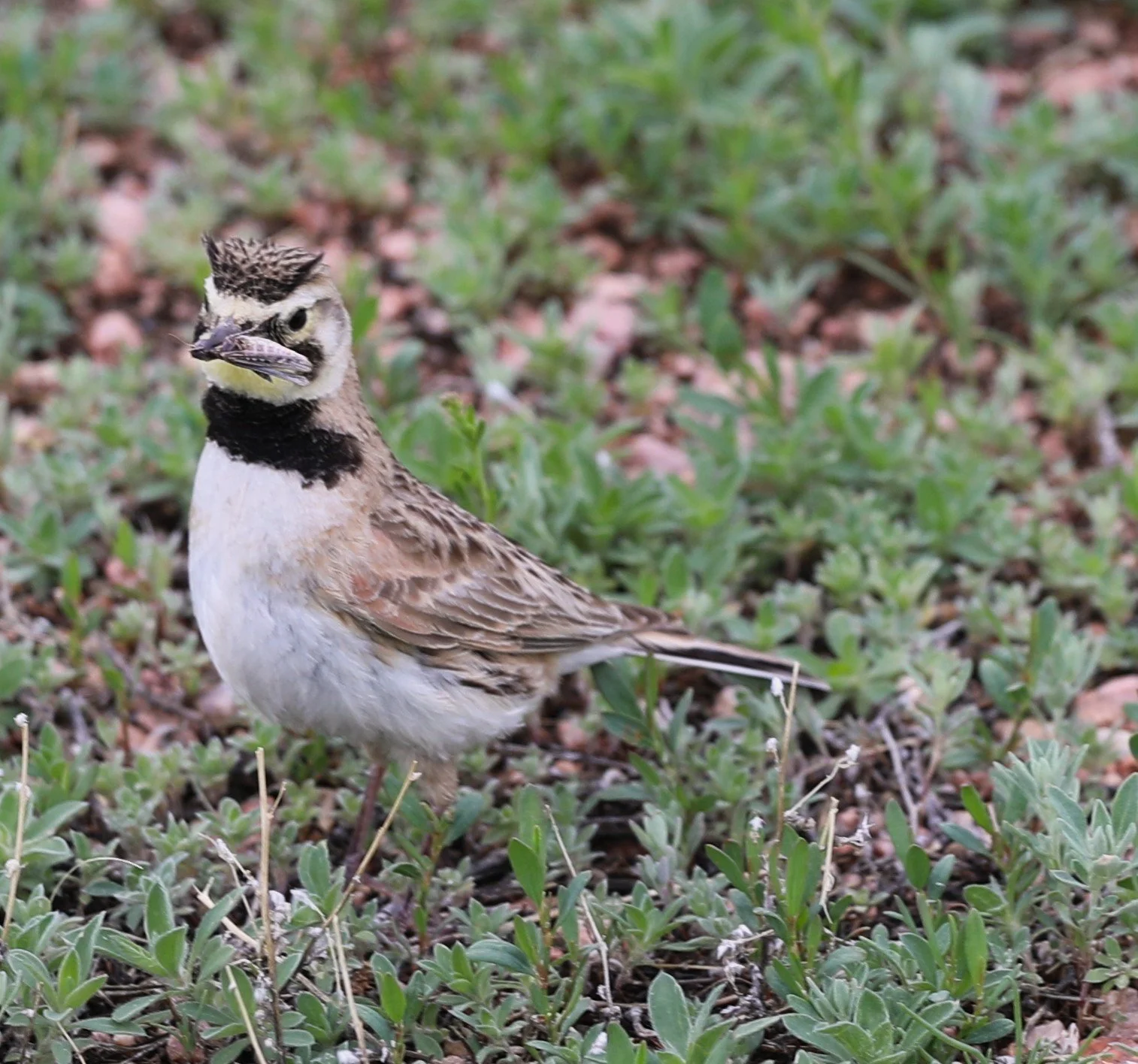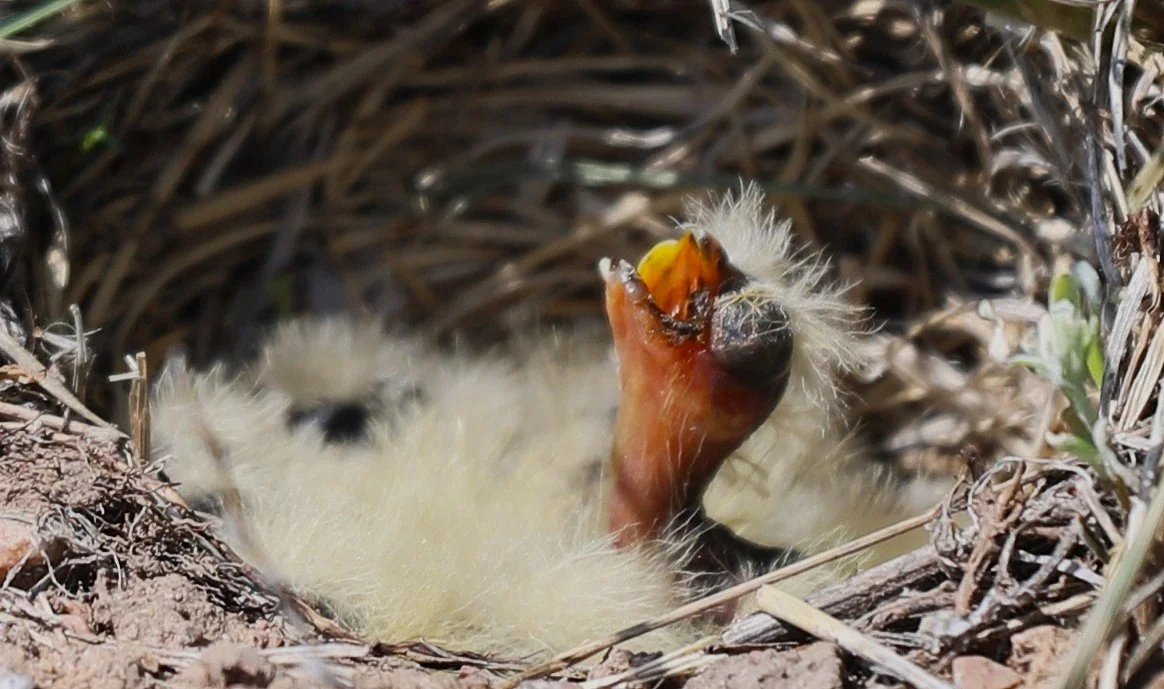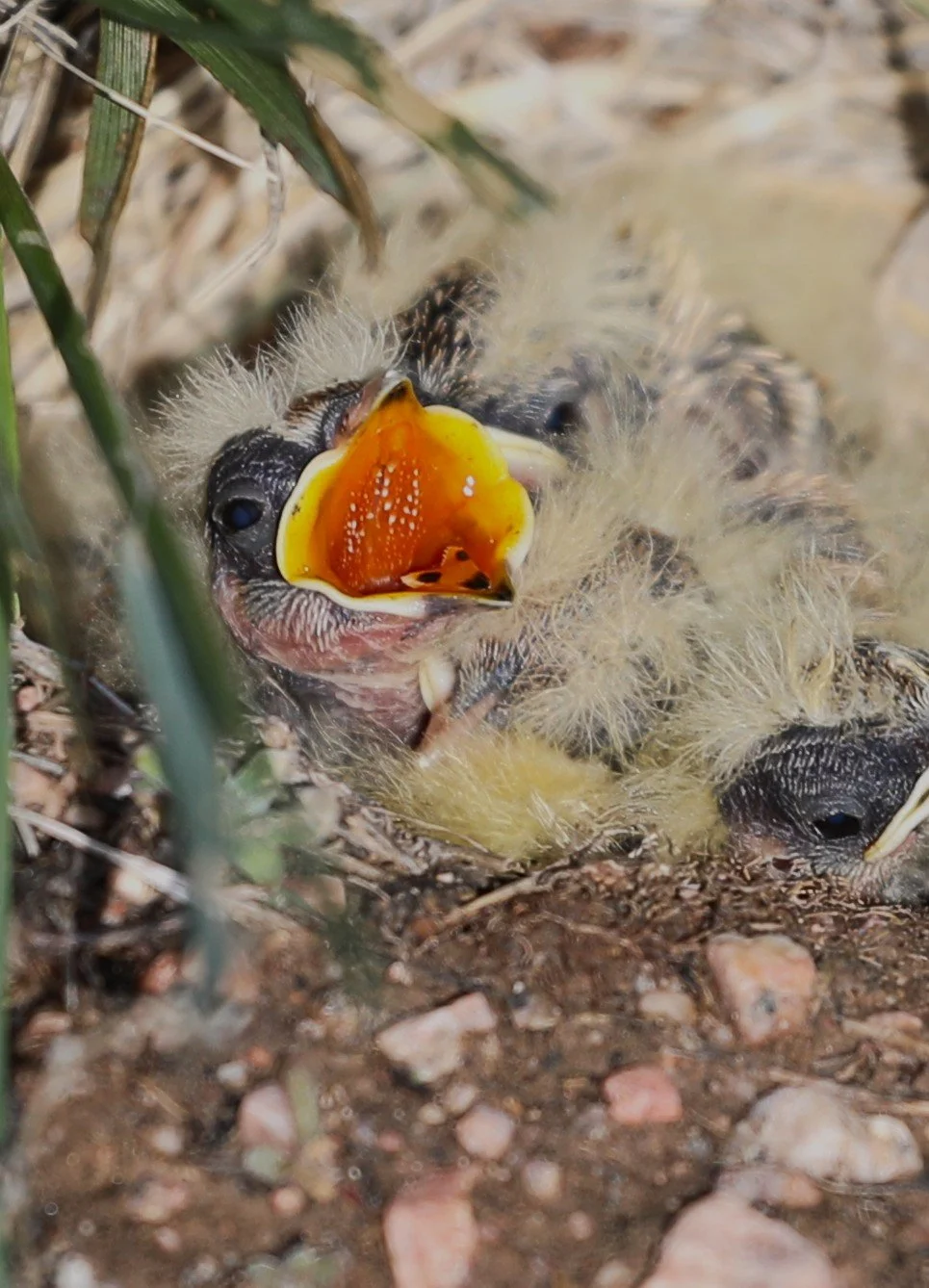The Beginning of a Horned Lark’s Life
Story and Photos By Autumn McPherson
The beginning of life for birds is pretty simple – most start off with being hatched in a nest in a tree. For the horned lark, their nest is buried in the ground. I was lucky enough to find one of these nests in my yard in Wyoming and observe the beginning of their lives. Horned larks have a white and brown body with yellow under their chin. Feathers grow to form the shape of a horn at the top of their head.
Horned larks like to walk rather than hop. They live in fields – as seen in the photos – plains, beaches, and funnily enough airports according to National Audubon Society: Field Guide to Birds, Western Region North America by Miklos D. F. Udvardy. These birds typically lay 3-5 grey eggs with brown speckles; our featured mother laid four. This species breeds in Alaska-Canadian Arctics, coastal Canada, and many parts of the USA. They are also in Europe, Africa, and Asia. Relatively, this species is seen in many parts of the world, from Wyoming, where the images were taken, to Alaska, where they are published. Horned larks tend to feed on young ground seeds and insects.
The mother collected grass to create her nest. She located a spot that she deems safe, in this case a tall section of grass that provided shade. Once the nest was built, she laid four eggs. A day after I found the nest, all four babies had hatched, leaving no eggshell remains as the mother carried them away to try to avoid predators from noticing her young.
Baby Horned Lark only a few days old.
The babies were born with minimal feathers that stick straight up resembling Einstein's hair. In the first three days of life, the baby horned larks were unable to open their eyes. They opened their mouths towards every noise assuming it was their mother trying to feed them. Once the birds hatched, the mother was on guard around humans as she perceived them as a threat. To deter me from getting closer to her nest she would walk in circles until I noticed her, then she’d run away acting as a decoy. While observing her babies I made sure to keep my distance using a long lens, as well as never touching the babies. Eventually the mother trusted my presence and would lay on her babies when I was near rather than trying to deter me.
By the fourth day of the babies’ lives, they were able to open their eyes and see the outside world. Unfortunately, the first week of their life was filled with heavy rain, harsh hail, and high gusts of wind up to 70 mph. However, the mom was smart with her choice of location for the nest; she used a tall section of grass that guarded the babies from the elements. When it rained, the mom used herself as a shield and fluffed up her feathers to keep the babies warm.
Two weeks old. The baby Horned Larks growing into their beaks and covered in feathers.
By the second week of life, the baby horned larks were growing into their beaks and were covered in feathers. At this point, they do not have the distinctive yellow under their chin like their mother.
After ten days of being cared for by their mother, three of the babies exited the nest. They still depend on their mother and father to feed them at this point and chirp repeatedly to allow her to locate them once out of the nest. On day eleven, the final hatchling left the nest. According to New York Breeding Bird Atlas III the hatchlings stay close to their nest after leaving and stay “crouched and motionless” for about a week. After they have spent a week hiding in the grass they begin to weakly fly and walk. Once the hatchlings reach around 27 days of age they are able to confidently fly and walk around. “At this point, they are independent of their parents and will form roaming flocks with other juveniles.” According to Cornell Lab All About Birds, the longest living recorded Horned Lark lived for at least seven years and eleven months. If the birds consider their birth place to have been a safe environment, they will return to the general area every year to breed, restarting the life cycle.




